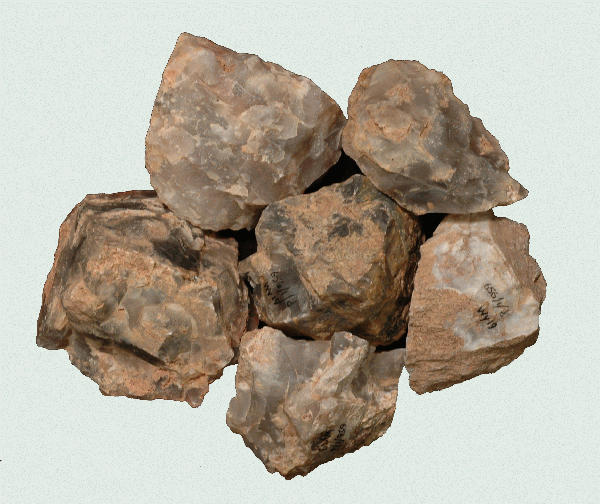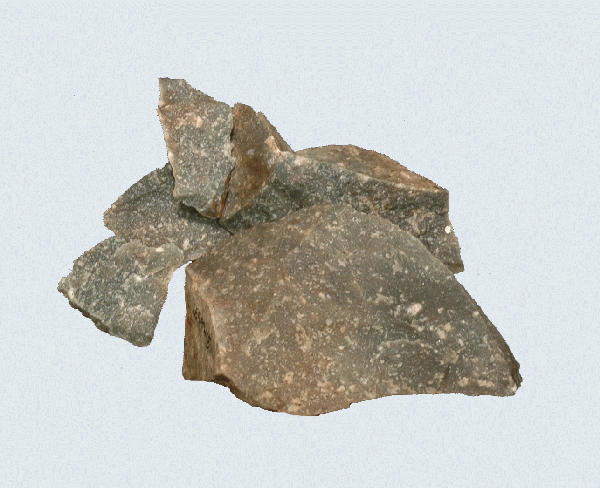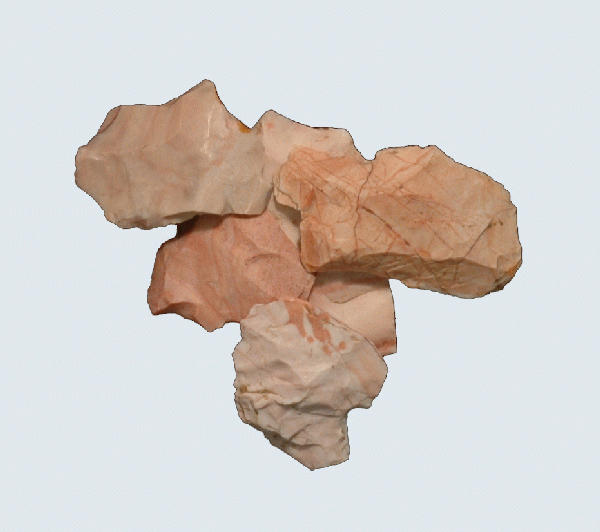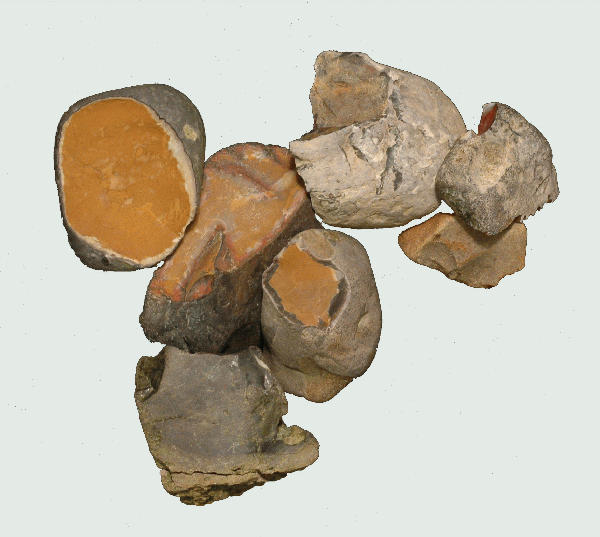
Pebble jasper, Martin Point, Talbert County, Maryland.
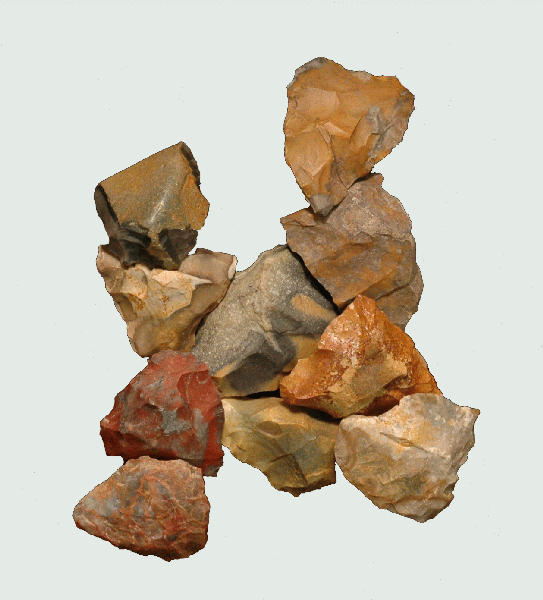
Pebble jasper, Great Neck site, 44VB0007, Virginia Beach, Virginia.
Type Jasper
Collection Location:
Pebble jasper and chert was recovered from various sites along Pongo Ridge in Virginia Beach, Virginia, while much larger cobbles were recovered from Martin Point along the Choptank River, Talbert County, Maryland.
Description
Jasper and chert are found in cobble/pebble form in various gravel deposits in the Coastal Plain of Virginia and Maryland. Normally the further up the river or the Chesapeake Bay the larger the cobbles, and the further towards the ocean, the smaller the cobbles until they reach pebble size near the ocean. Cobble outcrops found on the Delmarva Peninsula are associated with ancient paleochannel fluvial deposits. Lowery (2002) noted significant differences in the cobbles found in various deposits. ‘From the headwaters of the upper Chesapeake Bay to the northern Tangier Sound area, the cobble outcrops have a relatively uniform composition of non-cryptocrystalline and cryptocrystalline materials. The cobbles outcrops observed along the Pocomoke River in Somerset County, Maryland and within the Beasley Bay area in Accomack County, Virginia differ markedly. The Pocomoke and Beasley Bay outcrops include large quantities of very high quality quartzite along with thigh quality cobbles of jasper.’ This may be the result of their origins. Lowery suggested that the upper Chesapeake Bay deposits accumulated via the ancient Susquehanna River and the source materials came from Pennsylvania, while the Pocomoke-Beasley Bay area cobbles are associated the an ancient Potomac, Rappahannock and York rivers. The deposits in Virginia Beach would be associated with the James River system.
Distribution
The flakes, split pebbles and anvil stones are recovered from various sites in Virginia Beach and the Eastern Shore of Virginia. Undoubted when the ocean level was lower during the Archaic Period, many cobble beds were more visible and desirable cherts and jasper available.
Cultural Implications
The cobbles from the upper Chesapeake Bay of Maryland are large enough to make points and other tools from conventional flaking methods, while the small pebbles from Virginia Beach require bipolar flaking. Bipolar flaking does not permit the flintknapper as much control over fracturing as do more conventional methods (Geier 1990).
References
Prepared By Egloff 2008
